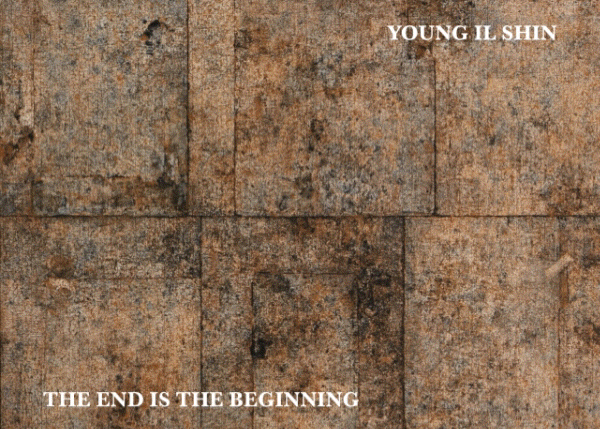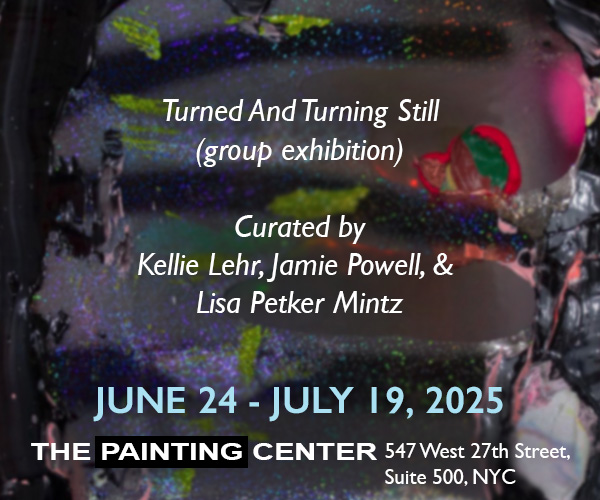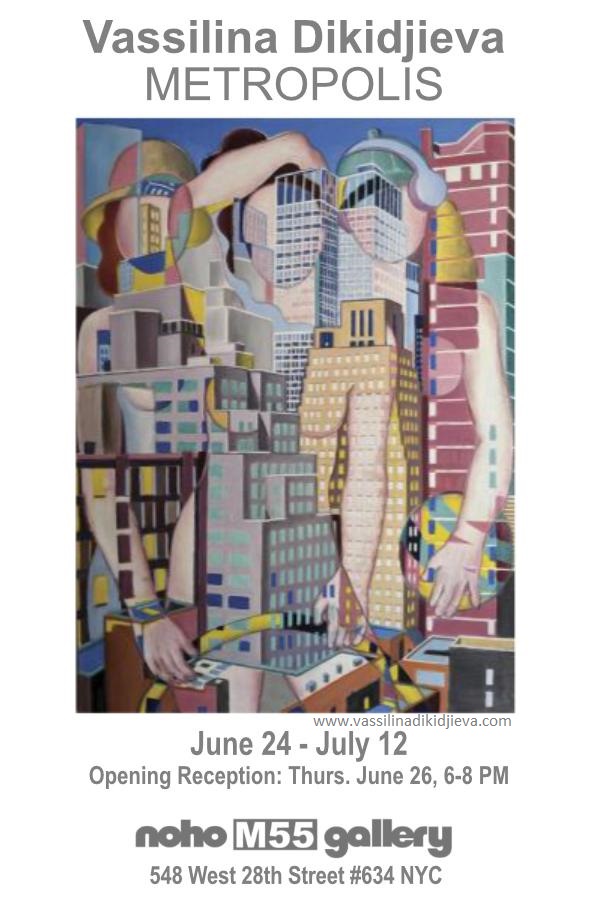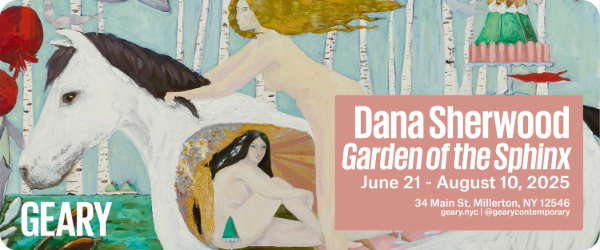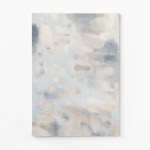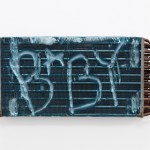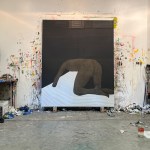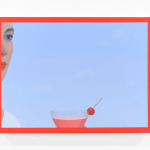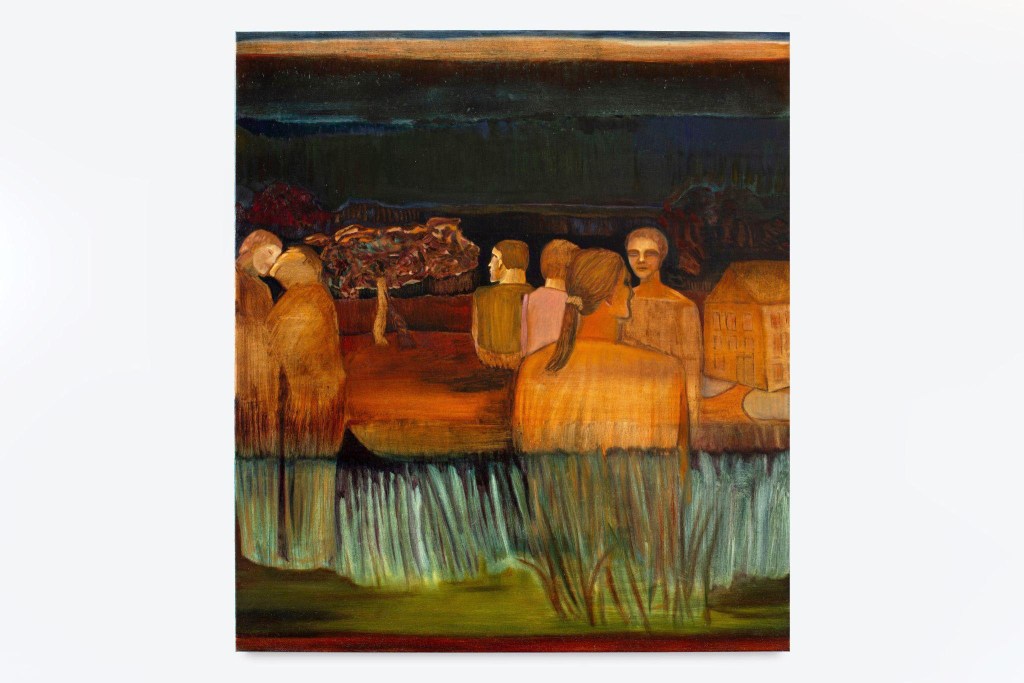
Contributed by Chunbum Park / The title of British-German painter Lexia Hachtmann’s solo exhibition “Waiting Room,” at YveYANG in Soho, alludes to David Lynch’s surrealist television series Twin Peaks, in which the “red room” or “waiting room” is an extradimensional space where time does not flow sequentially. The program ushered in the 1990s, when Hachtmann was born. In the moment, the nineties seemed to be the height of the American Century and still evoke nostalgia. Often overlooked is the fact that during this supposedly halcyon epoch, popular culture normalized homophobia, sexism, and racism more than it does now, even when Trumpist backsliding is taken into account. Hachtmann confronts this kind of slippage between memory and reality with subtlety and heart.
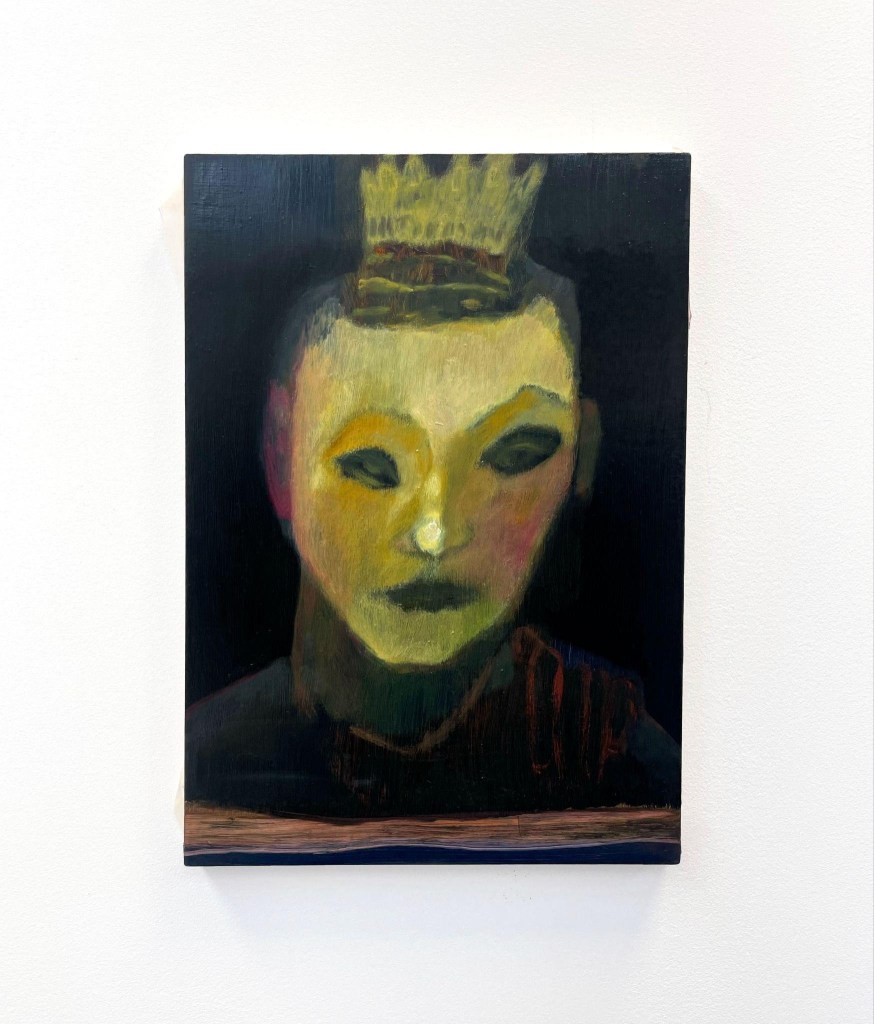
Out of Joint is ostensibly painted from the viewpoint of a man jealous of a couple kissing. The title channels a line in Hamlet – “time is out of joint” – that suggests, per Jacques Derrida, that the past haunts the present and forecloses certain futures. At the same time, the painting has expansive and hopeful aspects. The artist makes deft use of glazes to bring out warmth and a sense of light in what is, overall, a dark and moody scene, and the androgynous cast of the figures suggests a spectrum of gender expression. The vegetation is highly abstracted with simple elegant strokes, implying unearthly status. We know what grass is, but have we seen grass like this? Other worlds are possible.
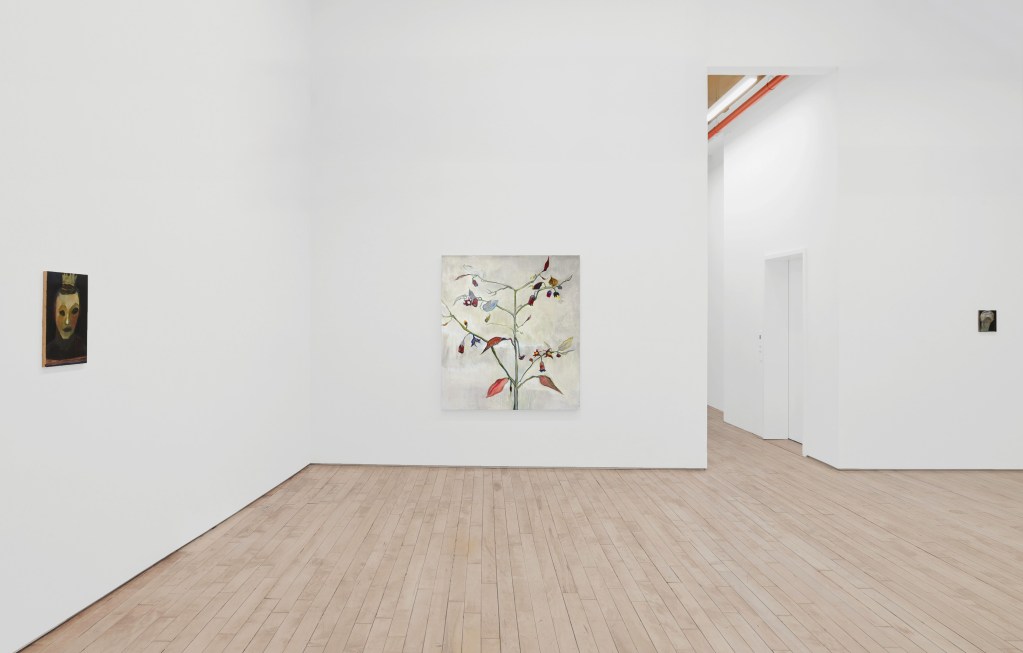
Yet Hachtmann’s work is far from fanciful or ahistorical. Little Prince presents a distortion of anatomical form similar to Frank Auerbach’s in Portrait of Leon Kossoff, painted in 1951. Both works, nearly 75 years apart, reflect the conviction, well expressed by critic Barry Schwabsky, that figurative painting should come from feeling rather than anatomy. This, as both artists show, may entail depicting the figure in a new way. Hachtmann employs less impasto than Auerbach and is more explicitly narrative. But their figures share a melancholy about mortality and fragility, signified by enunciated bone structure – sunken eye sockets or high cheekbones – and balanced against the dignity and resolve indicated by firm posture.
At bottom, Hachtmann is a roundly humanistic painter, questioning cultural benchmarks that no longer fulfill her aesthetic and spiritual needs but declining to completely discard them in light of time’s vicissitudes.
“Lexia Hachtmann: Waiting Room,” YveYANG, 12 Wooster Street, New York, NY. Through July 5, 2025.
About the author: Chunbum Park has exhibited artwork at the SVA Chelsea Gallery and is the founder of the Emerging Whales Collective, an online community for artists.


